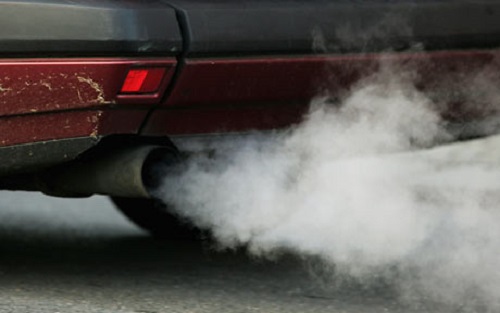According to Lei Zuo, associate professor of mechanical engineering in Virginia Tech’s College of Engineering, only 10 to 16 percent of the fuel a car consumes is actually used for driving; specifically, to overcome things like road resistance and air drag.
The rest of it? It gets lost to heat and other inefficiencies found within the car itself.

This led to Zuo looking for opportunities to recover or otherwise generate new energy while driving. One solution he came up with involved targeting the vibrational energy dampened by the car’s shock absorbers.

Zuo estimates the average car’s shock absorbers could provide between 100 and 400 watts of energy on normal roads, and even more on rougher roads. This amount of power could translated to an increase in fuel efficiency between 1 and 5 percent which, if this technology were outfitted on all of the 255 million cars on the road in the United States, would add up to an annual fuel savings of $13 billion to $19 billion.

In terms of how it all works, the shock absorbers translate the vertical vibrations of the suspension into rotational motion that turns a generator. The generator then delivers electricity to the car’s battery or electrical devices, so as to reduce the demand on the alternator.
Worth noting about this solution is the fact that it has overcome a major hurdle when it comes to harvesting vibrational energy: converting bidirectional, up-and-down motion into the unidirectional motion needed to drive a generator. The technology’s unique combination of gears allows motion in both directions to be converted into electricity, which pretty much doubles the amount of energy that can be recovered.
Zuo further explains that this innovation allows the generator to operate at a fixed speed and reduces the load on the gear teeth which, as a result, makes the system more efficient and reliable.
Also worth noting: the generator keeps rotating even after the vibration has stopped, so as to maximize the amount of energy recovered.
So far, Zuo’s students have tested the shock absorber on campus roads. As it is presently constructed, the device – built solely with off-the-shelf components – can harvest 60 percent of the available energy, a significant improvement over other designs.
Zuo believes that with more precise components and better manufacturing of the system, the technology could reach 85 percent efficiency.
In terms of real world application, the device is retrofittable in terms of space and function, and can be added to any car without changing anything in the vehicle itself.
Looking ahead, Zuo will now begin to focus on the commercial viability of his energy harvesting system. His goal is to address the concerns of drivers as well as automakers.
“When we present this to drivers, they ask, how much can you improve the fuel efficiency? How soon can I get my money back?” Zuo said. “From the car manufacturer's side, they ask another question: Can you replace my commercial shock absorbers? Can you give me better suspension performance?”
Zuo will tackle cost and performance with the next iteration of this technology. Per the former, Zuo admitted the car’s not really cost effective for car owners who drive less than an hour a day, so he will focus on applications for large commercial vehicles while working to reduce the cost.
As per the latter, Zuo said he wants to adapt his design using self-powered semi-active control—a system wherein a microprocessor senses vehicle conditions and adjusts the suspension accordingly, for the purpose of delivering a smooth ride while harvesting the greatest amount of energy.
Via Virginia Tech
Advertisement
Learn more about Electronic Products Magazine





